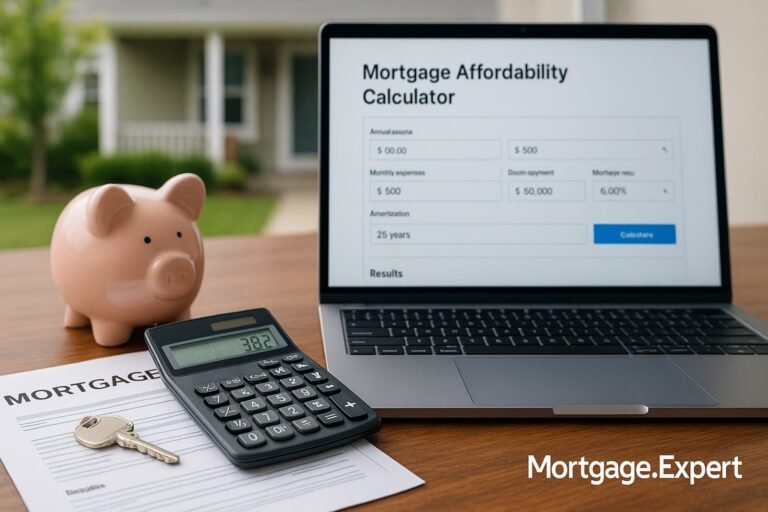
How Much Do You Need for a Down Payment in Canada?
Wondering how much down payment you need to buy a home in Canada? This guide explains the percentages, thresholds, and tips to save smarter in 2025
If you’re planning to buy your first home, one of the biggest hurdles is saving up for the down payment. It’s the upfront cash you’ll need to seal the deal — and it can feel like a mountain to climb. But don’t worry. In this guide, we’ll walk you through exactly how much you need, why it matters, and how to save smartly so you can turn your dream of homeownership into reality.
What Is a Home Down Payment?
A down payment is the amount you pay upfront when buying a home with a mortgage. It’s your financial commitment to the purchase and shows lenders that you’re serious — and capable — of taking on a mortgage.
Instead of borrowing 100% of the property’s value, you cover a portion with your savings. The rest is covered by your mortgage lender. The more you can pay upfront, the less you borrow — which means smaller monthly payments and, possibly, lower interest costs over time.
What Are the Minimum Down Payment Rules in Canada?
Here’s how the down payment requirements work in 2023:
- Homes under $500,000 → You need at least 5% of the purchase price.
- Homes between $500,000 and $999,999 → You’ll need 5% on the first $500,000, and 10% on the remaining amount.
- Homes $1 million and above → You’ll need at least 20% down.
For example:
- On a $400,000 home → $20,000 minimum down payment
- On a $750,000 home → $50,000 (5% of $500K = $25K + 10% of $250K = $25K)
- On a $1.2M home → $240,000 (20% of $1.2M)
💰 Minimum Down Payment in Canada by Home Price (2025)
Canada’s down payment rules depend on the purchase price of your home. Here’s how much you need to save based on federal guidelines:
| Home Price | Minimum Down Payment | Effective Rate | Insured? |
|---|---|---|---|
| $400,000 | $20,000 | 5% | Yes |
| $600,000 | $35,000 | 5% on first $500K + 10% on remainder | Yes |
| $800,000 | $55,000 | 5% on first $500K + 10% on next $300K | Yes |
| $999,999 | $74,999.90 | 5% on first $500K + 10% on remainder | Yes |
| $1,000,000+ | 20%+ | Flat 20% (no tiered structure) | No (conventional only) |
📌 Note: If your home costs $1 million or more, you cannot get CMHC insurance—so a 20% down payment is mandatory.
Why a Bigger Down Payment Is Better
While 5% is the minimum for many homes, paying more can give you a serious advantage.
- Smaller mortgage = lower monthly payments
- Lower interest costs over time
- No CMHC mortgage insurance if you put 20% or more down
Mortgage loan insurance (required if you put less than 20% down) can cost thousands. Avoiding it means serious savings — and more negotiating power with lenders.
How to Calculate Your Down Payment
It’s pretty simple math:
Home price x required percentage = your minimum down payment
So if the home costs $600,000:
- First $500K → 5% = $25,000
- Remaining $100K → 10% = $10,000
- Total = $35,000 down payment required
You can use online mortgage calculators to play with different prices and down payment amounts.
🔢 Calculate Your Mortgage, Payments & Affordability
Not sure how much home you can afford or what your payments might look like? Use our free mortgage tools to find out instantly—whether you’re a first-time buyer or renewing your current loan.
🧮 Try Our Mortgage CalculatorsWhat Is Mortgage Loan Insurance?
If your down payment is less than 20%, you’ll need to pay for mortgage loan insurance, often called CMHC insurance.
This protects the lender (not you) in case you default on the loan. The premium can be between 2.8% and 4% of the mortgage amount and is usually added to your loan balance.
So if your mortgage is $475,000 and the premium is 3.1%, that’s an extra $14,725 added to your mortgage.
📊 CMHC Premium Rates by Down Payment Percentage
Here’s how mortgage default insurance premiums change based on your down payment. These rates are applicable to insured mortgages in Canada as of 2025.
| Down Payment | Loan-to-Value (LTV) | CMHC Premium Rate | Premium on $500,000 Home |
|---|---|---|---|
| 5% ($25,000) | 95% | 4.00% | $19,000 |
| 10% ($50,000) | 90% | 3.10% | $13,950 |
| 15% ($75,000) | 85% | 2.80% | $11,900 |
| 20%+ ($100,000+) | 80% or less | 0% | $0 (not required) |
💡 Note: Once you reach a 20% down payment, mortgage insurance is no longer required—saving you thousands upfront.
5 Smart Ways to Save for Your Down Payment
1. Automate Your Savings
Set up auto-transfers to a high-interest savings account dedicated to your future home. Every payday, move a fixed amount. Out of sight, out of spend.
2. Tap Into the Home Buyers’ Plan (HBP)
If you have RRSP savings, you can withdraw up to $35,000 ($70,000 for couples) tax-free to use as a down payment. You’ll have up to 15 years to repay it.
3. Cut Unnecessary Spending
Dining out, subscriptions, impulse buys — every cut adds up. Track your spending and redirect those funds to your down payment fund.
4. Start a Side Hustle
Freelancing, tutoring, selling online — any extra income stream can fast-track your savings.
5. Use First-Time Buyer Incentives
Look into federal or provincial programs, such as rebates, tax credits, or shared equity options that reduce your upfront burden.
💸 Down Payment Assistance Programs (Federal & Provincial)
First-time buyers in Canada may be eligible for down payment help from the federal government or their province. Here’s a list of major programs available in 2025:
🇨🇦 Federal Programs
- First Home Savings Account (FHSA) – Contribute up to $8,000/year (max $40K) tax-free to build your down payment faster.
- RRSP Home Buyers’ Plan (HBP) – Withdraw up to $60,000 tax-free from your RRSP to use as a down payment.
- GST/HST New Housing Rebate – Rebate of up to $50,000 for new homes under $1 million (introduced May 2025).
- Down Payment Matching Pilot – New federal initiative offering up to $25K as a matched contribution in select provinces (2025 pilot).
🏞️ Provincial & Local Programs
- British Columbia: First-time buyers get full Property Transfer Tax exemption on homes ≤ $500K, and partial up to $860K. Additional down payment loans may be available through local partnerships.
- Ontario: Provincial LTT rebate up to $4,000. City of Toronto offers additional $4,475 rebate + some municipal assistance options.
- Quebec (Montréal): First-time buyers can get $5K–$15K for new homes or $5K–$7K for eligible resales under $725K.
- Prince Edward Island: 100% LTT exemption for first-time buyers regardless of home price.
- Nova Scotia: Enhanced homeownership rebates for 2025 up to $4.5K to assist with upfront costs.
- Manitoba, Alberta, Saskatchewan, NB, NL: Various municipal grants and forgivable loans exist—check local housing authority portals.
🧠 Tip: Stack programs where allowed—for example, use FHSA + HBP + provincial rebate to maximize your down payment fund.
Final Thoughts: Start Small, Think Big
Saving for a down payment takes time — and discipline. But it’s doable, especially if you start early, automate your savings, and take advantage of government programs.
Whether you’re aiming for 5% or 20%, knowing your target and tracking your progress can make all the difference.
Stuck with a Mortgage Decision?
Don’t stress — our team is here to help. Reach out for free, no-obligation guidance.
Contact the Experts



